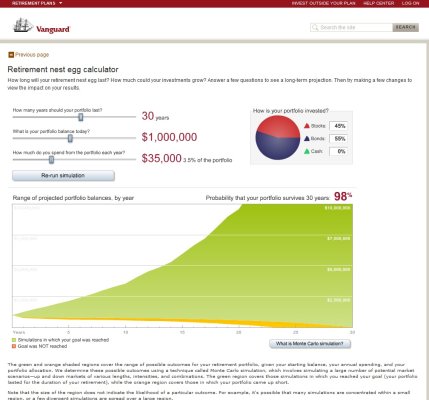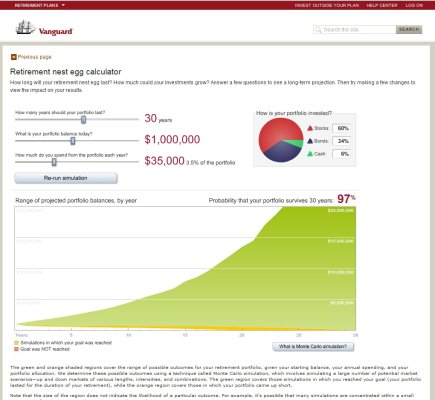Please take the below as an attempt at constructive criticism:
I was just looking at different options of selling high as the market allows to get to my goal of a few more years of safe money for when the market turns down.
We don't know that the market is near a "high"--it might be, or it might keep heading up for years. You are now considering changing the asset allocation that you'd previously set, apparently because you believe stocks have become overvalued and you'd like to take money off the table. If you rebalance back to your original %ages because stocks have gone up--then that's one thing. If, however, you want to try to time the market by changing your allocation because you think stocks are "high"--then realize you are trying to outguess the market, and that seldom ends well.
I won't be able to take SS for 6 years so it would be nice to have those years fully funded.
What's the yield of your present bonds? What is the dividend yield of the stocks you own? If your holdings are typical, maybe the divs and interest will go a long way to funding your short-term requirements without even needing to sell anything if the market goes down.
My personality can ride through the craziness of market turmoil since I rode out the 2000 and 2008 crashes with no problem.
So, what's different about now? You could handle the market swings before, you believe you'll be able to handle them again--but just not right now. If you can't take the volatility today, will you be able to take it in 6 years? Why not just change your allocation, if it needs to be done.
And--what happens in 6 years if you still feel in your gut that stocks are "high"? Keep more cash--still? And if stocks do go down over the next 6 years and you just spend your cash and don't rebalance (incl selling bonds to buy more stocks), then you'll own fewer shares when they do rebound--and you'll be worse off than if you'd bought them all along.
If having 6 years in a "cash bucket" helps you sleep, then I'd recommend that you take a close look at your rationale. If it still makes sense after considering everything, then go ahead.
This is a good read:
Kitces: Buckets vs total return with rebalancing. Buckets vs no buckets: Makes no difference if a person will be rebalancing. And if they aren't rebalancing--hmm.
But, back to your question: If you want to increase your cash allocation (or call it a bucket if you like), since we are talking about your IRA, there's no particular reason to just use dividends to do it over time. There's no tax implication to just selling whatever you want to sell right now (stocks, bonds) and making the cash allocation just what you'd like it to be. If you'll be fretting every day that the market could fall and you'll miss your chance, then do it today and stop thinking about it.
FWIW, I used to be a bucket fan.
Best wishes.


